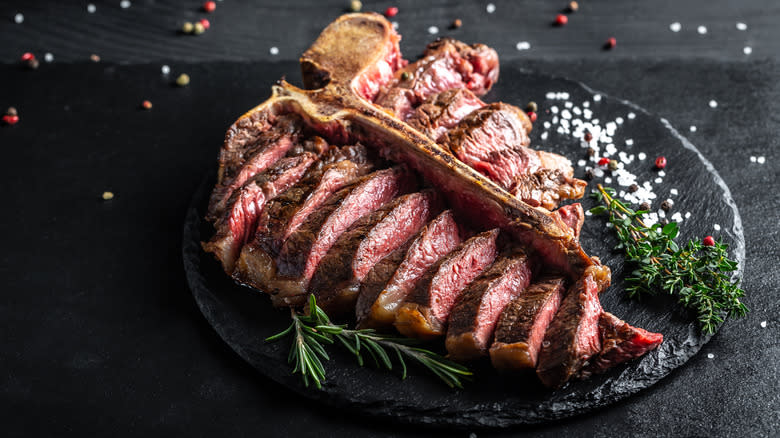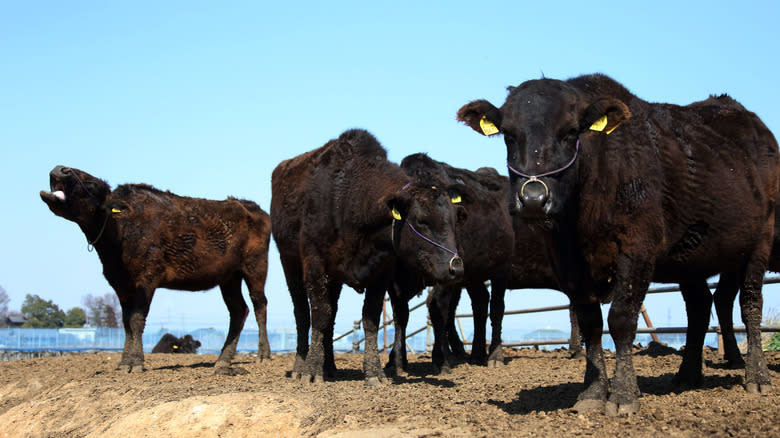What The BMS Rating Means For The Quality Of Wagyu Steak

Whether it's Kobe, Iga, Matsusaka, or the coveted Wagyu beef, premium steak from Japan gets a lot of kudos. At first glance, it may seem hard to tell them apart, but there's a good chance you'll land on Wagyu as the one you crave. Certified Japanese Wagyu beef has many valuable characteristics but, in the end, it really comes down to the marbling in the steak.
Marbling isn't just an eyeball-it distinction. Rather, it's an industry-wide carefully calculated ratio. For Japanese Wagyu, it's measured in terms of the Beef Marbling Standard (BMS) rating, which meticulously calculates the quality of the Wagyu. But first, there's a yield score (measured as either an A4 or A5), which indicates the amount of meat on the bone and how much it will yield in a typical piece of meat. The second measurement is where the BMS comes into play. Using a rating system of 1 to 12, it measures both the quality and the amount of marbling. For the highest BMS rating of 8 to 12, the steak must also be accompanied by a yield rate of A5. Likewise, the next rating down, that of 6 through 8, requires a compatible yield measured as an A4. All that sounds well and good, but what really matters to most culinary consumers is how that marbling affects the taste and quality of the steak for which they're paying a premium price.
Read more: The Most Popular Cuts Of Steak Ranked Worst To Best
Marbling Affects Quality, Taste, And Texture

The term Wagyu actually means "Japanese Cow," but it's not as simple as it sounds. Though four general breeds of cattle exist in Japan, the ideal Wagyu is an A5 steak with the highest BMS rating of 8 to 12. Due to strict genetics and a carefully nurtured, well-fed, stress-free life of up to three years, the rich marbling of these cows carries a deep umami flavor with tender, fatty meat and a buttery mouthfeel. The lower the BMS number, the less of the coveted marbling, but it's still a Wagyu steak and still something to be valued.
One important thing to note is that there's now more than one nationality of Wagyu steak. In the U.S., pay attention to the wording when buying or ordering Wagyu — the distinguisher being whether it's labeled as Japanese Wagyu or American Wagyu. There are definitely differences, including how the cattle are fed, raised, and bred. Japanese Wagyu cows are strictly purebred, while most American Wagyu steaks come from cross-bred cattle, typically a cross between Wagyu and Angus.
American beef in general has its own USDA rating system, generally falling into simpler categories ranging from Select to Choice to Prime. Japanese Wagyu beef, on the other hand, supersedes all those classifications. Some American Wagyu breeders devise their own terminology corresponding to the Japanese system. If you're lucky enough to be eating a true Japanese Wagyu steak anywhere in the world, the BMS rating for marbling applies.
Read the original article on Tasting Table.

